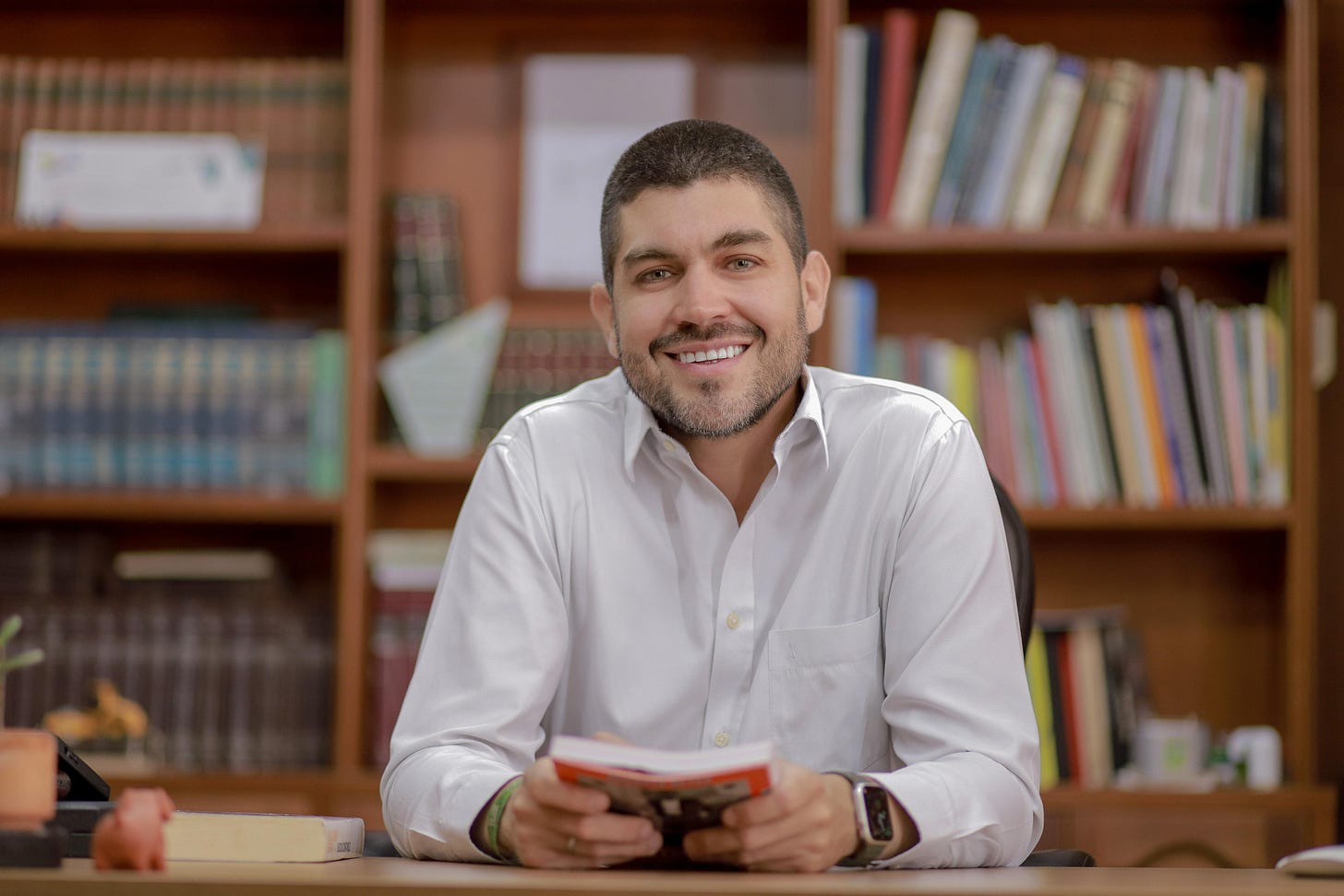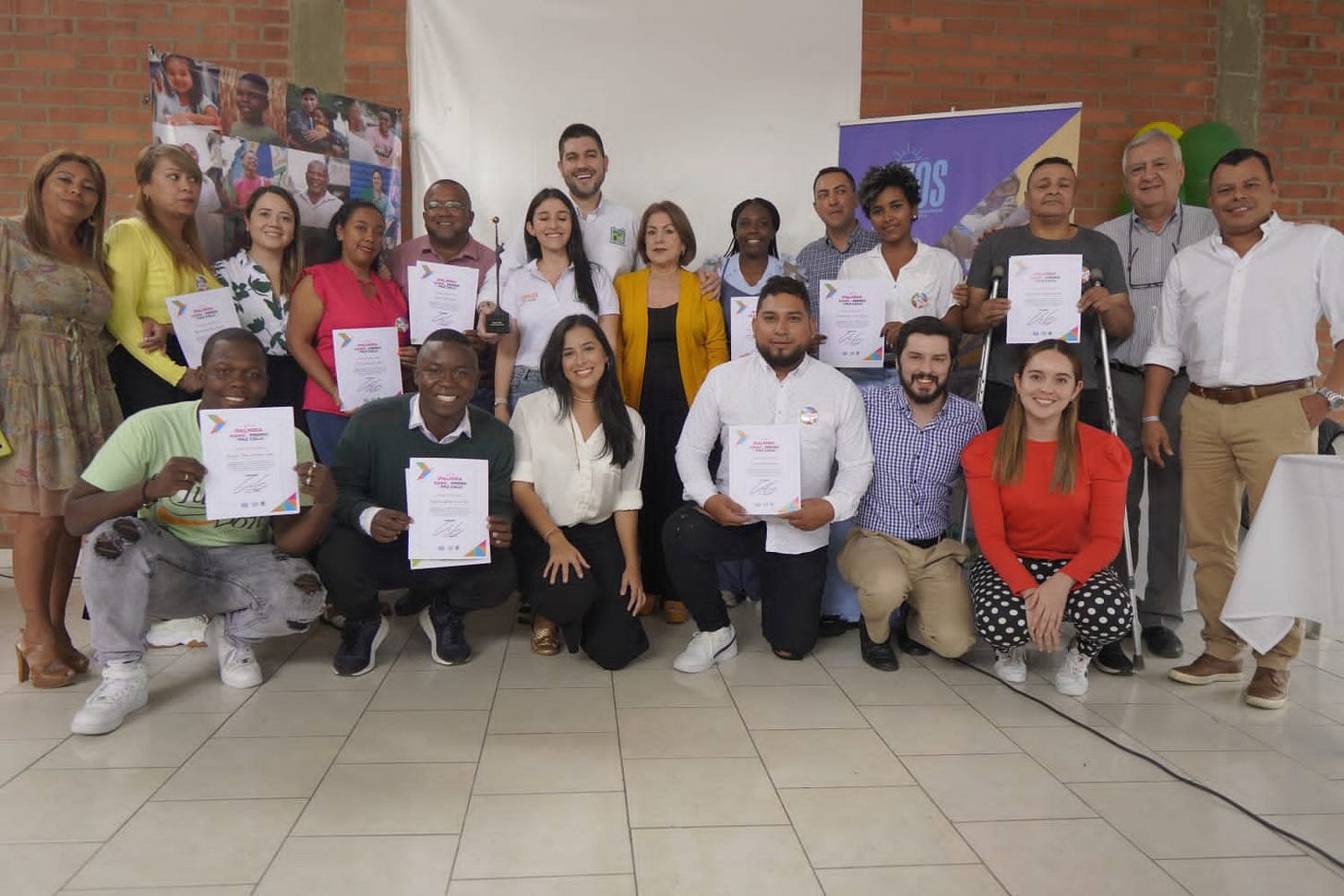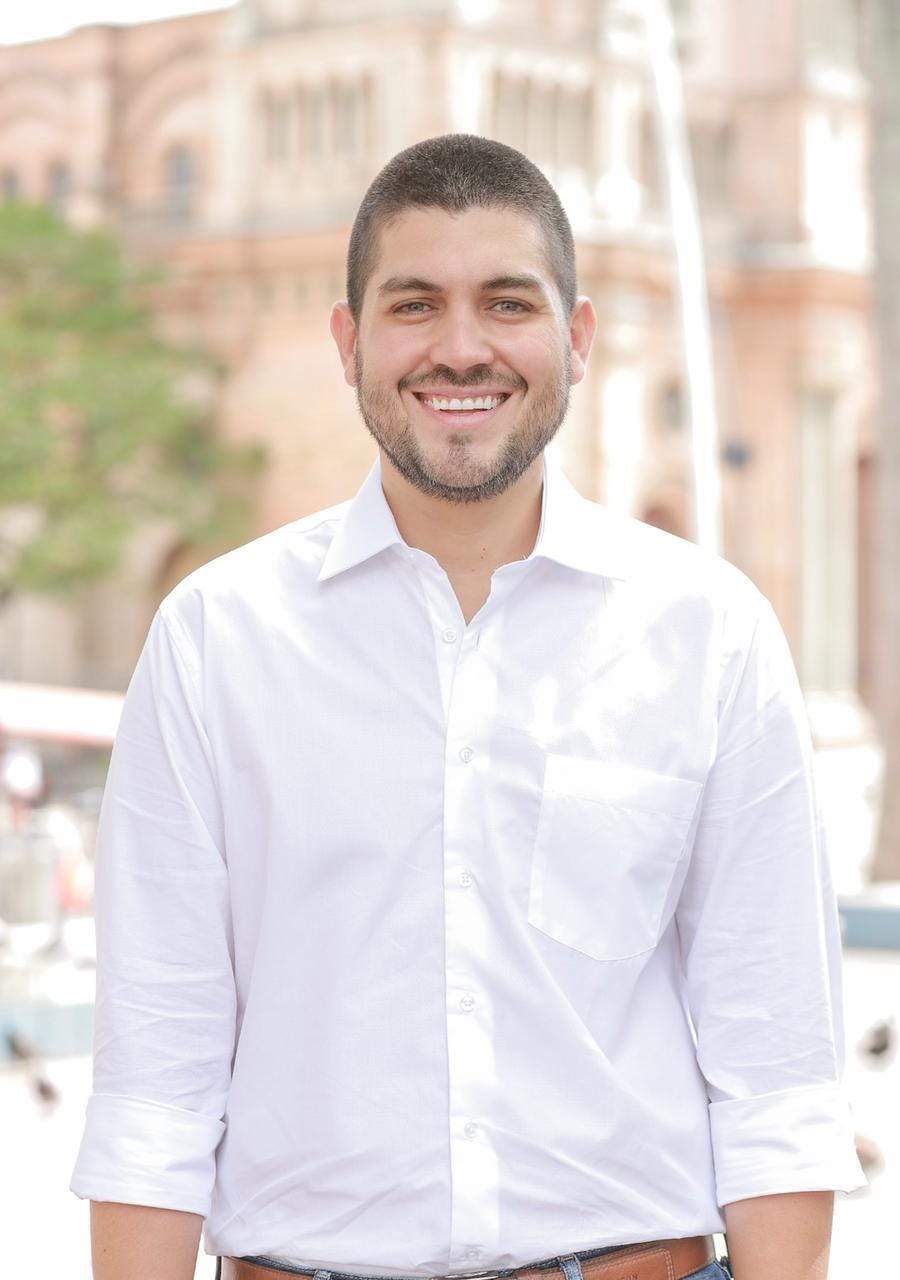Convivencia Managers in Palmira
Palmira, Colombia, recruited youth to act as convivencia managers and invested in public spaces, resulting in the lowest crime rate in 17 years. Former Mayor Óscar Escobar explains how it was done.
I have been working on this idea of friction for a couple of years now. Over the coming months, we’ll be publishing several case studies from my research at Johns Hopkins University ranging from park development in Brazil to park and library renovations in Philadelphia. The first paper was published the other week (download here) covering the work in Amsterdam. Bloomberg Cities Network did a great piece on it, which you can read here. This quote from the article captures one of the main reasons I feel this work resonates with government staff:
“The fact that we understand that friction is important and we need friction for innovation doesn't make it fun,” he says. But when city leaders lean into differences—and not common ground—as a locus for innovation, they can unlock more than individual new solutions.
Convivencia and Violence
Last October, a bunch of city innovators gathered in the gorgeous city of Bilbao for the first ever Bay Awards. The festival celebrated urban projects that address the largest challenges of cities.
I have a soft spot and a professional interest in projects that focus on new forms of collaboration. One of the finalists for the Partners in Progress Award, which celebrates collaborations, was the Pazos initiative, which successfully reduced violence to the lowest level in 17 years in the Colombian city of Palmira. I was intrigued by the fact that one of Pazos’ key initiatives was the recruitment of gestores de convivencia, which roughly translates to managers of coexistence. The city also saw the condition and activation of public spaces, like parks, as an effective way to promote safety and belonging.
While my work on convivencia has mostly focused on friction and tension, I wanted to understand how the idea of convivencia helps in tackling extreme violence and homicides.
Óscar Escobar, Palmira’s Mayor at the time, is currently pursuing a Master’s degree in Public Administration at the Harvard Kennedy School in Cambridge, Massachusetts. I was delighted when Óscar agreed to talk to me and my colleague Ashli Molina about Pazos - and convivencia.
(The conversation below is redacted for clarity.)
Tommi: Thanks again for agreeing to talk to us. Before we move to the work you and your team did on reducing violence, could we start by setting the scene for us? What was the context when you became mayor?
Óscar: Palmira is within the de facto metropolitan area with Cali. The issues between Palmira and Cali are very similar. They’re separate cities, but people move between them all the time for work, school, and daily life. Cali is the third-largest city in Colombia.
Latin America makes up about 8% of the world’s population, but depending on the source, it can account for up to 30% of global homicides. That’s a massive issue for the region. It has far-reaching consequences. It's a social tragedy for many families and a political problem. In any city, security is always a top concern, but in our context, it's on a different level.
What’s also really sad is how we’ve almost normalized homicide. I think that’s partly due to deep inequalities and how many people are involved in illegal activities. For example, if there’s a shooting — like one or two over a weekend — but it happens in a particular neighborhood, people tend to dismiss it. But if a shooting happened in front of the mall where the upper class hangs out, that would be a scandal. People would be outraged. It really ties back to inequality.
Palmira has its own particular challenges. There’s a Mexican NGO that releases a list every year of the 50 most violent cities in the world. It becomes a kind of marketing nightmare for cities that appear on it. Palmira has been on that list consistently. I believe the only time it dropped off was during our time in office.
All of this to say that when you're campaigning for office, safety isn’t just a media headline. Voters feel it. They come to you, not just because they’re embarrassed by the news coverage, but because safety is a real, lived concern.
Tommi: When you were campaigning and started as mayor, how did you talk about safety and violence?
Óscar: Starting around 2012, Cali implemented a program called Tíos, which stands for Territorial Inclusion and Opportunities. That program was one of the inspirations for what we did in Palmira with our PAZOS initiative. The idea was to prioritize certain areas of the city and then bring more public programs and investment into those neighborhoods.
We asked ourselves: What can we do that actually works? What’s a responsible way to approach this issue?
We had one main goal: reduce homicide, and we looked to achieve that through opportunities and five components of the strategy:
Interruption
Intervention
Prevention
Safe environments
Access to justice
We were very clear that we wanted to create new opportunities for young people, and that we saw lack of opportunity as a core driver of violence.
Before I took office, the previous mayor had implemented a strategy of military intervention in neighborhoods — literal military bases inside residential areas. It was extremely popular at the time, especially with older residents who felt reassured by the sight of heavily armed soldiers stationed on their blocks. These interventions deepened stigma and discrimination against the very communities they were supposed to protect.
Young people didn’t love it. When I took office, one of my first decisions — in coordination with a new military commander who had also just arrived — was to dismantle that program. There was a lot of pushback.
But then, the pandemic hit. In a strange way, that helped shift public focus away from the controversy and gave us time to start building something new. The reality is that when you enter the office, you don’t immediately start implementing your platform. You first have to develop your four-year plan, debate it with the city council, and finalize your budget — that takes about six months. So there’s this transition period where you’re mostly managing whatever the previous administration left behind.
We officially launched PAZOS around November 2020 — almost a year into the term.
Ashli: PAZOS has received quite a bit of international recognition, including the UCLG Peace Prize. How would you describe PAZOS in your own words?
Óscar: The program's design was developed in an academic and methodical way. The real challenge was implementing it and helping people understand what PAZOS actually was. Even today, a lot of people still think PAZOS was a foundation—what we’d call an NGO. They assumed it was just an organization that helped young people, but it was never that.
We did work with a lot of NGOs, and I think that’s part of the answer to your question.
As mayor, I had authority, but I didn’t have legitimacy in those spaces. I couldn’t show up and say, ‘Look at me, I studied and you can too.’ People couldn’t relate to my story. I come from a place of privilege, what we call in Colombia an hijo de papi y mami. People in these neighborhoods live in completely different realities. So we needed someone who actually represented them, who could be that bridge. That was absolutely key to the program. If you look at the evaluations that have been done, that link to the community was one of the strongest elements.
PAZOS was an articulation strategy—it brought together many different social programs that already existed within the city, as well as those from the private sector and the church. We took various programs and gave them a consistent face and presence in the neighborhood—someone you could recognize and talk to. That person was the Gestor de Convivencia—we called them community or co-existence managers. The gestores were young people from the same neighborhoods, which made all the difference. They built trust because they were from the community.
Ashli: Could you talk a bit more about where the idea for the gestores came from?
Óscar: We didn’t really invent anything new. A lot of what we did was based on programs that have worked elsewhere in the world. Chicago has a program called Cure Violence, where people from the neighborhoods try to interrupt violence between gangs. That program had an exchange with Cali. We in Palmira didn’t have a formal exchange with them, but some of the people we hired had been part of those exchanges, so we benefited from that history. Also, the mayor of Cali I worked with implemented a similar program called Gestores de Convivencia between 2016 and 2019. He also has a private foundation (Sidoc Foundation) and continued that work independently.
Ashli: Do you mind sharing more about how the program went about selecting individuals from the community?
Óscar: The selection process for these young people was very rigorous. In Colombia, like in many places, it’s common to hire people who campaigned for you. We completely rejected that approach. We were looking for young people who lived in the neighborhoods, had some experience in social work, and were already active in their communities—running sports programs for kids, for example. Some had worked with small local NGOs or participated in community organizing efforts.
One of the early mistakes we made was placing them under the Secretary of Security because that’s where the funding was. We had to work closely with the Secretary to make sure people understood that these gestores were not informants. That misconception was dangerous as it could have put them at risk. Their job wasn’t to gather information for the police. That was a critical shift we had to make early on.
Tommi: I find that insight really important, even when coming from a very different context. So I used to run the youth department in Helsinki in Finland. We increased our collaboration between youth workers, the police, and security guards in downtown areas. One of the first things we had to work on was making it absolutely clear that the youth workers were not there to act as informants. Their role was to help the police and security personnel understand why certain things were happening and what was going on—not to report every young person who might be doing something suspicious.
Óscar: The message that these people are not informants needs to be clear. What they’re meant to do is help resolve issues in the community.
One of the problems we have with the police is that there are very few of them. Sometimes, they just have to go knock on doors where people are drunk or the music is too loud. They’re dealing with convivencia problems, not hardcore security issues. One reason police popularity is lower than that of the military is because the police are the ones dealing with these nuisance issues.
What we tried to do was use this program to have coexistence managers handle some of these issues. Even the police liked the program. The police felt that we, as a city, we were taking responsibility for security, not just blaming them. There was a lot of cooperation in that sense.
Tommi: Could we go back to the idea of convivencia? What does the word convivencia mean?
Óscar: It’s about living peacefully with your neighbors. Many of the homicides, maybe 50 percent or more, are due to narcotrafficking issues. These are very difficult situations to handle. But another part of it is when a neighbor gets drunk, says something to another neighbor’s wife, and then that person goes and kills them with a machete. This happens a lot, and it’s connected to what I mentioned earlier: the normalization of violence as a way to solve problems. So, convivencia is about how we solve that.
Let me give you another example. Soccer is very popular in Colombia. In our region, there are two main teams: Cali and América. Cali is green, and América is red. The fans of these teams have strong organizations and their influence in different neighborhoods is significant. If a wall is painted green and a red graffiti is sprayed on it, it’s considered a death threat. If we don’t solve this convivencia issue, it can escalate into violence or even homicide.
The coexistence managers played an important role here. They could identify this kind of problem early on, long before the police could respond. They would see a problem like this early and go directly to the person who did it, saying, "This is a big issue. You need to fix it." They would then go with the person, bring some green paint, and fix the graffiti. That was their way of preventing violence from escalating.
Tommi: We've read that PAZOS has helped reduce the homicide rate in Palmira to its lowest point in 17 years. What would you say is the long-term impact of the program? When you look at the current situation in Palmira, where does the city stand now?
Óscar: The city’s highest homicide rate was probably around 2011, when we were reaching almost 100 homicides per 100,000 people, which is absolutely crazy. When we reached the lowest level, it was around 31.9 or 32, which, again, is still very high. According to the World Health Organization, any homicide rate above 20 is considered an epidemic.
For us, the most important thing was not just that the rate went down, but that we could actually identify that the program was having an impact. That’s why we conducted an evaluation study with the help of Universidad Javeriana and Open Society Foundation. With PAZOS, we could work with private organizations, NGOs, and the church. The reality on the ground often requires making informal arrangements, even if they’re not legally sanctioned. That’s where working with coexistence managers and other organizations is critical—they can mediate and facilitate these solutions.
The new mayor is from a different political party, and he has mostly dismantled PAZOS. While a lot has been lost in terms of the articulation with the private sector and the church, not everything is gone. More importantly, the focus has shifted. He’s not trying to jail every kid with a tattoo or cause unnecessary conflict. And despite political differences, he’s continued to work on community initiatives like food kitchens with the church.
Tommi: As a final question—you’ve said this wasn’t built from scratch, and I appreciate that. It reminds me of research I did in Fortaleza, Brazil, where they created pocket parks by adapting ideas from Bogotá. They said openly that they did not invent this but thought it was smart to build on lessons from others. What advice would you give to other cities looking to adopt a convivencia-based approach to safety and violence?
Óscar: I should also mention that, besides all our experience in Colombia, we participated in a network called Peace in Our Cities. They’ve facilitated exchanges between about 30 cities around the world, mostly in the Global South. It’s inspiring to see how passionate people from very different parts of the world can come together to tackle similar issues. Many of the initiatives started because of those early interactions and our participation in a lot of virtual events during the pandemic in 2020 and 2021.
I think one key thing other mayors or local governments need to learn from this experience is that articulation is absolutely crucial. Government is often divided, especially because of budgeting principles. As a mayor, you represent the whole city, and people expect you to fix everything. But within the government, everyone else is just focused on their own silo. It creates competition between departments. Articulation is essential for any program to be successful, not only within your own team but also with external actors like the private sector and the church—it’s key to building trust.
In government, you’re often trying to get people to listen to you, to understand your plans, but it can take time for them to truly engage with what you’re doing. For us, in the beginning, we were trying to get people to understand. But as we started having success, things changed. People began to come to us, asking to be part of PAZOS. That’s when we knew we were truly successful. When people started demanding things from the program, it was no longer something new—it had become part of the government’s recognition. This also led to extra efforts from us, which was a positive outcome.
As a mayor, it’s common for everyone to come to your office asking for money or employment, which is overwhelming. For example, the local soccer team came to me asking for financial help. I would say, ‘Maybe if you bring your players to these neighborhoods and sponsor a program, I can help.’ It became clear that if people wanted my attention, they had to engage with the program.
Lessons from Óscar Escobar
In local government, it’s hard to make progress if everything is a priority. Leadership requires articulating the opportunity, making choices, connecting existing measures and learning from elsewhere.
The striking thing in PAZOS was the understanding of the need for connective tissue. In the case of Palmira, that connective tissue were the gestores de convivencia who had credibility in their communities and focused on navigating friction or the risk of violence towards practical solutions.











